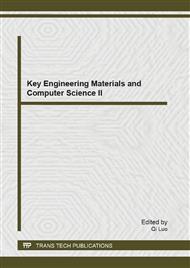p.188
p.194
p.200
p.205
p.210
p.215
p.221
p.227
p.233
Microstructure Analysis of Post Weld Aging in Duplex Stainless Steel Welds
Abstract:
Duplex stainless steel (DSS) offers an alternative to the austenitic stainless steels especially at temperatures between –50 and 300°C and is suitable for structural applications. The research was study the effect of post weld aging (PWA) parameters on microstructure in heat affected zone. The specimen was duplex stainless steel (DSS) UNS31803 which thickness of 10 mm. The PWA sample were tested the microstructure and phase analysis. The factors used in this study were PWA temperature of 650, 750, and 850 ๐C with PWA time of 1, 2, 4 and 8 hours. The welded specimens were tested by microstructure and phase analysis testing according to ASTM E3-11 code. The result showed that both of PWA temperature and PWA time can greatly affect microstructure and phase analysis in heat affected zone (HAZ). The ferrite that was austenite with a grain and an austenite scattered throughout. The microstructures of PWA 650 °C with PWA 1, 2, 4 and 8 hours in ferrite phase which ferrite phase was not different. The widmanstätten structures were observed high PWA temperatures were also distributed at grain. At high PWA temperature, ferrite at the grain boundary tended to decrease. Moreover excessive aging temperature can result in increasing austenite intensity and size in parent phase. Definitely, at high PWA temperature and time, over-aging of HAZ resulted in corrosion resistance reduce.
Info:
Periodical:
Pages:
210-214
Citation:
Online since:
July 2013
Authors:
Price:
Сopyright:
© 2013 Trans Tech Publications Ltd. All Rights Reserved
Share:
Citation:


